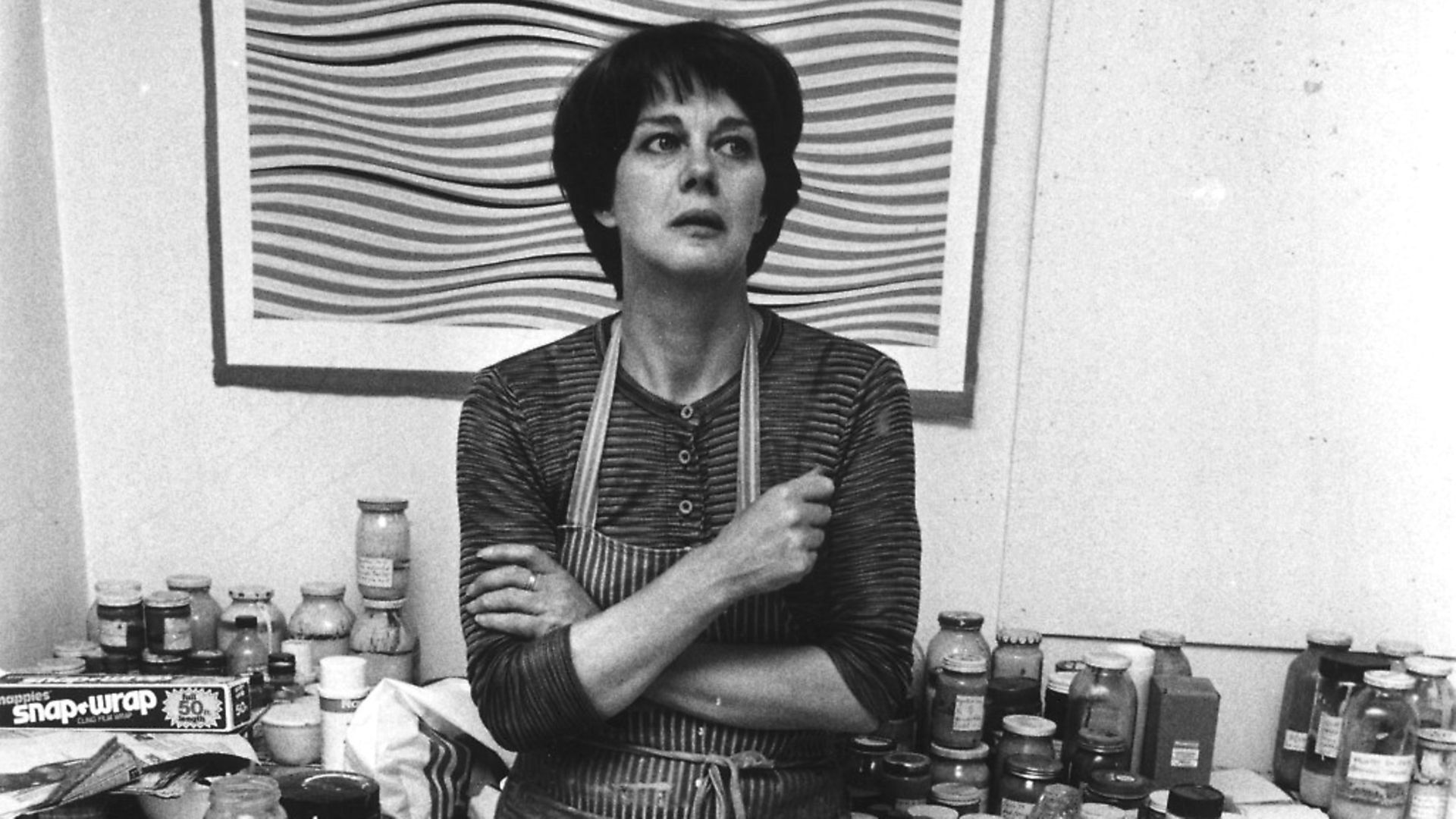
Perhaps Britain’s most important living painter, Bridget Riley’s op-art paved the way for the Swinging Sixties. Claudia Pritchard reports.
The 60-year career of the artist Bridget Riley seems as clear-cut and directional as the knife-sharp edges in her eye-catching stripes, as solid and dependable as the coloured discs of her later years. And a glorious retrospective at the Hayward Gallery in London tells the story of a continually unfurling talent that has touched three generations and continues to entrance art-lovers. It is not a narrative without setbacks, however, and is all the more touching for that.
Born into a comfortably-off family and blessed with an enlightened education that allowed her to put art above everything else, Riley studied at the Royal College of Art in a golden era: Contemporaries included Frank Auerbach and Peter Blake. But in the late 1950s, the stress of nursing her father after a road accident and the struggle to find her own voice led her to a job in commercial art.
On seeing the highly influential exhibition by the American expressionist Jackson Pollock at the Whitechapel Art Gallery in 1958, she renewed her studies and a tour of Italy changed everything.
In 1961, the monochromatic Kiss introduced the world to Riley’s graphic style, as pure colour and form set up a dialogue. Fortuitously, a conversation of a different sort began when she sheltered from the rain in a Mayfair doorway. The premises were those of the important avant-garde Gallery One, whose owner Victor Musgrave subsequently went to see her work and staged her first solo exhibition in 1962.
With her exciting experiments in black and white optical art, the artist impressed the New York art scene so much that after a show in 1965 shops were flooded with imitations. Riley had developed a technique so appealing, so in tune with the upbeat mood of the 1960s, that she lost control of her innovation. With no copyright law in the US to protect her, she was obliged to set about legal actions that would lead to the first American copyright legislation two years later.
What excited her imitators so much were the illusions created by simple geometric forms put, as she said, “through their paces … to see what the chosen form can do”. The answer, in her dextrous hands, was just about anything. The black and white sections of a chequerboard all but vanish in Movement in Squares (1961), for example, as though two giant rollers are devouring them in their vertical rotation. Such three-dimensional illusions catch us unawares, and delight, over and over again. Reinforced by the grading between black and white through shades of grey, in Pause (1964) discs are warped into ovals and the whole composition undulates, like the gathering of fabric.
Those black, white and grey dots began life in Riley’s admiration for the pointillist Georges Seurat, whose work she copied and interpreted in her own way at an early stage. One of the most impressive things about this captivating journey through Riley’s career is the generosity of scale, but also of the artist herself. No one could look at more than 50 major works without asking questions about her methods. And these are laid out for all to see in a room crammed not only with early work, including her explorations of Seurat, but also drawings, notes and prototypes, on graph paper and tracing paper, in pencil and gouache.
Almost from the outset Riley has been open about using assistants as part of the creative process. (Artists with more vanity have been known to shove them in the background and pretend they do not exist.) She patches together strips of coloured paper, geometric shapes, experiments with the reaction of adjacent colours upon each other. In this she is like the great German teacher, colour theorist and artist Josef Albers, who in 1965 called Riley his “daughter”.
The evolution from black, white and greys to the intense colours of later work sprang partly from further travels. In Italy she had been most of all impressed by the rhythm of the Futurists and the inherent pattern and the colour palate in the frescoes of Piero della Francesca, but otherwise she preferred architecture, with its structures, to the work of the great masters. She would come to them later – Titian, Tiepolo, and, in Madrid, the Spanish masters. In India in 1977 and Egypt in 1979-80 she absorbed stronger colour palettes that resonate in her own work.
And resonate they do, for the works are as animated as song and dance. Titles often set the scene; far from detached, for all their singularity, Riley’s works have a sense of place (Where, or From Here), value (Less), time (Pause, November) and incident (Tremor, Fission). What they are not, unlike their cheap imitations, is essentially mathematical. An artist who has spoken and written at length about her work, Riley explained as early as 1965 that she never studied optics and that her arithmetical skills ran only as far as “equalising, halving, quartering, and simple progressions”.
At this point you could be listening to a minimalist composer speaking, and with its rhythms, direction and repetitions there is an essential musicality of Riley’s art. She borrows from the musical lexicon: Chant 2 (1967) and Paean (1973) are landmark stripe paintings that sing; in Aria (2012) with its brighter palette, she turns up the volume.
In the 1970s and 1980s Riley sliced diagonally across her stripes to create rhomboids, creating huge canvases of dazzling diamonds. With time, the rhomboids’ hard edges softened, so that more curvaceous forms danced across the room and even, in the case of Rajasthan (2012), popping out of the usual rectangular limits and jumping across the gallery wall.
Movement, as in a corps de ballet, ripples through the whole of 88-year-old Riley’s work, and that’s because she is not alone. It is not only her collegiate team of assistants who participate, but we the viewers. Our eyes and minds are constantly on the move, making observation and connections. Riley’s career has in itself been one rapturous paean to the miracle of sight.
Bridget Riley is at Hayward Gallery, Southbank Centre, London, until January 26









